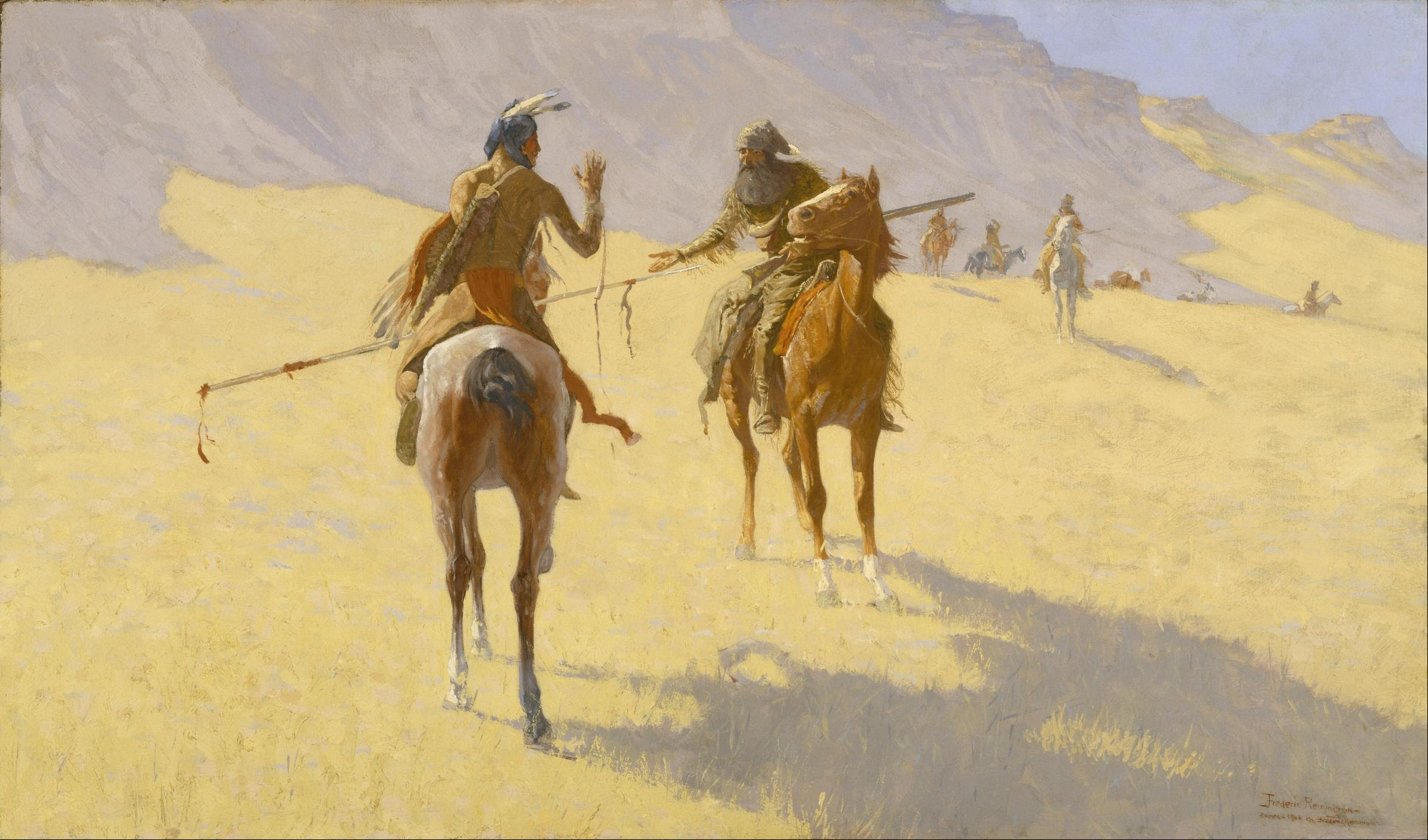|
Parley
A parley (from french: link=no, parler – "to speak") refers to a discussion or conference, especially one designed to end an argument or hostilities between two groups of people. The term can be used in both past and present tense; in present tense the term is referred to as parleying. In some cases, opposing parties would signal their intent to invoke parley by using a white flag, however the use of a white flag to invoke or request parley is not considered mandatory. The term ''parley'' has been used to refer to numerous high-profile meetings of the 20th century, including the London and Paris Conferences held in 1954 to determine the status of West Germany. In popular culture Below are some examples where a parley is a significant element of the plot. * The Last of the Mohicans features a scene depicting a parley at the end the siege of Fort William Henry. * In the ''Pirates of the Caribbean'' series, parley is a plot device introduced in the first film, '' Pirate ... [...More Info...] [...Related Items...] OR: [Wikipedia] [Google] [Baidu] |
White Flag
White flags have had different meanings throughout history and depending on the locale. Contemporary use The white flag is an internationally recognized protective sign of truce or ceasefire, and for negotiation. It is also used to symbolize surrender, since it is often the weaker party that requests negotiation. It is also flown on ships serving as cartels. A white flag signifies to all that an approaching negotiator is unarmed, with an intent to surrender or a desire to communicate. Persons carrying or waving a white flag are not to be fired upon, nor are they allowed to open fire. The use of the flag to request parley is included in the Hague Conventions of 1899 and 1907: The improper use of the flag is forbidden by the rules of war and constitutes a war crime of perfidy. There have been numerous reported cases of such behavior in conflicts, such as combatants using white flags as a ruse to approach and attack enemy combatants, or killings of combatants attem ... [...More Info...] [...Related Items...] OR: [Wikipedia] [Google] [Baidu] |
Elizabeth Swann
Elizabeth Turner (née Swann) is a fictional character in the ''Pirates of the Caribbean'' film series. She appears in ''The Curse of the Black Pearl'' (2003) and three of its sequels, '' Dead Man's Chest'' (2006), '' At World's End'' (2007) and '' Dead Men Tell No Tales'' (2017). She is portrayed by Keira Knightley (and as a child by Lucinda Dryzek in the prologue of ''The Curse of the Black Pearl''). She is known to use the alias "Elizabeth Turner", but this later becomes her married name when she weds Will Turner. Elizabeth is the only child to Weatherby Swann, the love interest (later wife) to Will Turner, mother to Henry Turner and daughter-in-law to William “Bootstrap Bill” Turner. Personality Elizabeth is a spirited, intelligent, and independent-minded character whose beauty attracted Will Turner, James Norrington, Sao Feng, and Captain Jack Sparrow. Only Will Turner's affections were reciprocated, although she struggled with a subtle attraction and kiss wit ... [...More Info...] [...Related Items...] OR: [Wikipedia] [Google] [Baidu] |
The Curse Of The Black Pearl
''Pirates of the Caribbean: The Curse of the Black Pearl'' is a 2003 American supernatural swashbuckler film directed by Gore Verbinski and the first film in the ''Pirates of the Caribbean'' film series. Produced by Walt Disney Pictures and Jerry Bruckheimer, the film is based on Walt Disney's ''Pirates of the Caribbean'' attraction at Disney theme parks. The story follows pirate Jack Sparrow (Johnny Depp) and blacksmith Will Turner (Orlando Bloom) as they rescue the kidnapped Elizabeth Swann (Keira Knightley) from the cursed crew of the ''Black Pearl'', captained by Hector Barbossa (Geoffrey Rush), who become undead skeletons in moonlight. Jay Wolpert developed a script in 2001, and Stuart Beattie rewrote it in early 2002. Around that time, producer Jerry Bruckheimer became involved in the project; he had Ted Elliott and Terry Rossio work on the script, adding the plot device of a supernatural curse to the story to bring it in line with the original theme park ride. Filmin ... [...More Info...] [...Related Items...] OR: [Wikipedia] [Google] [Baidu] |


